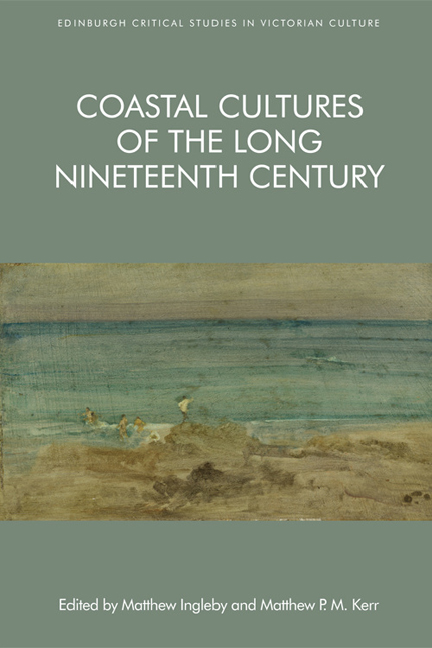11 - Developing Fluid: Precision, Vagueness and Gustave Le Gray’s Photographic Beachscapes
Published online by Cambridge University Press: 01 May 2021
Summary
The scores of sea views were all so apparently alike that they appeared to be all done by the same photographer.
Henry Peach RobinsonIn Thoughts about Art (1862), the artist and essayist Philip Hamerton speculates on ‘the relation between photography and painting’. He compares ‘a wonderful little picture by Holman Hunt’, Fairlight Downs, Sunlight on the Sea – first exhibited in 1858 – with a marine photograph by Gustave Le Gray (Figures 11.1, 11.2). The focus of Hunt's picture is the brilliant seascape running along the top of the frame. The sea reflects the sun so brightly that it is almost white in places, and the glare distorts the outlines of the steamers and sailing ships dotted along it. In his analysis of Le Gray's photograph, Hamerton also draws attention to the effect of the sunlight on the water. He observes that ‘the blaze of light upon the sea is given with perfect fidelity’; however, in his eyes this effect has been achieved at a cost:
In order to get this, and the light on the edges of the clouds, all else has been sacrificed – the shaded sides of the clouds, in nature of a dazzling grey, brighter than white paper, are positively black in the photograph, and the pale splendour of the sunlit sea – except where it flashes light – is heavy and impenetrable darkness.
‘It is’, Hamerton submits, ‘one of the peculiar misfortunes of the photograph that it is not capable of giving two truths at once.’ While Hamerton frames his conclusion generally, the particular substance of his discussion – and of Le Gray's marine photographs – associates the need for ‘two truths’ with seas and skies, and with the coastline.
Although Hamerton could not have known at the time, he was not strictly correct in his appraisal of Le Gray's pictures. In fact, the startling light effects of Le Gray's marine scenes of the mid-to late 1850s were the result of a doctoring process in which two negatives – one containing the sea and shore, and the other the sky – were joined to make one image.
- Type
- Chapter
- Information
- Coastal Cultures of the Long Nineteenth Century , pp. 200 - 224Publisher: Edinburgh University PressPrint publication year: 2018



